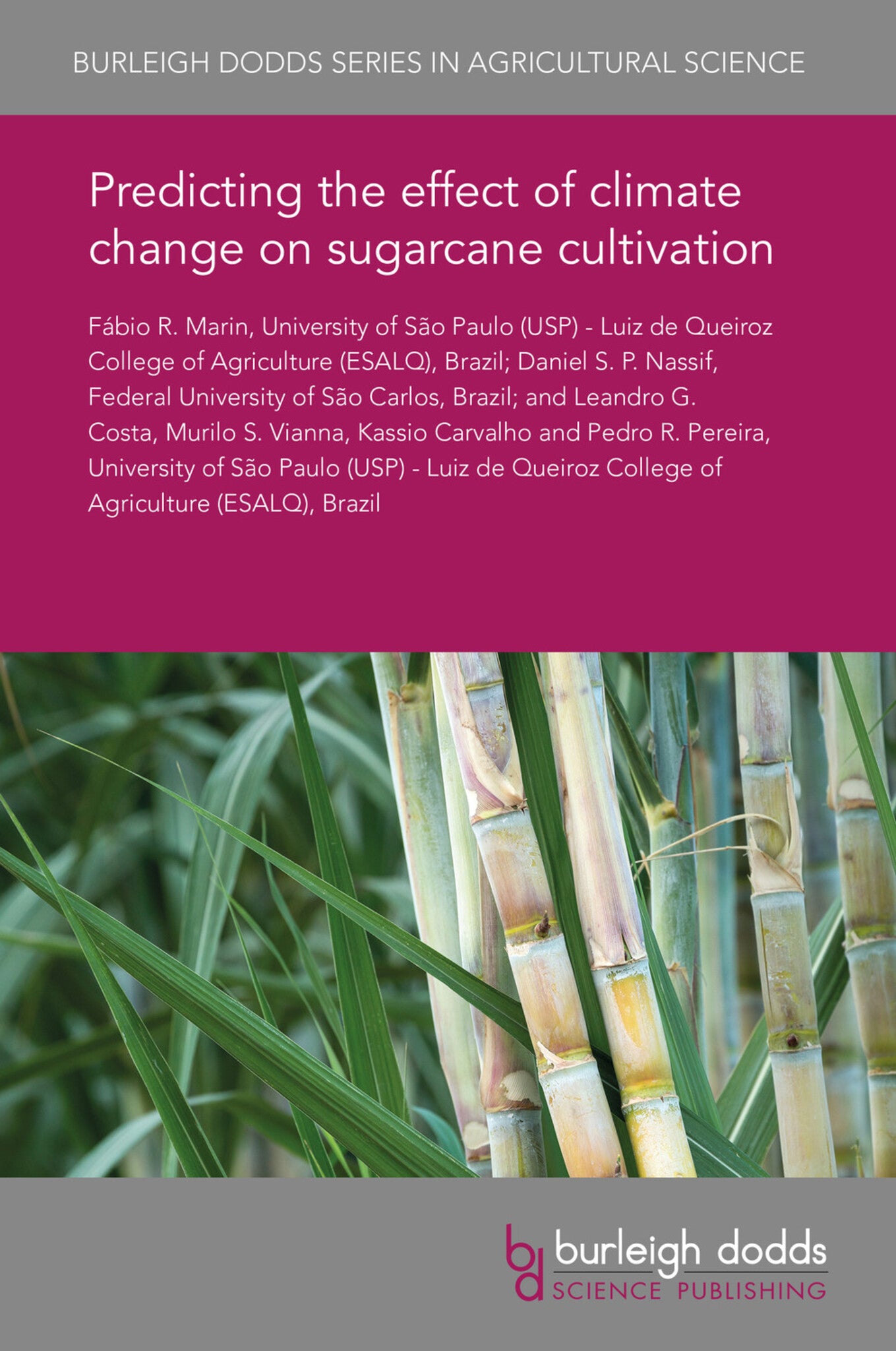We're sorry. An error has occurred
Please cancel or retry.
Predicting the effect of climate change on sugarcane cultivation
Professor fábio r. marin,
Daniel s. p. nassif,
Leandro g. costa,
Dr murilo s. vianna,
Kassio carvalho,
View More
Pedro r. pereira
Regular price
£25.00
Sale price
£25.00
Regular price
£25.00
Unit price
/
per
Sale
Sold out
Re-stocking soon
Sugarcane (Saccharum spp.) can be used to produce ethanol and biomass for energy generation, as part of a climate change mitigation policy. It is also an important crop from a food security perspec...
Read More

Some error occured while loading the Quick View. Please close the Quick View and try reloading the page.
Couldn't load pickup availability
- Format:
-
11 December 2017

Sugarcane (Saccharum spp.) can be used to produce ethanol and biomass for energy generation, as part of a climate change mitigation policy. It is also an important crop from a food security perspective, with almost 75% of the world's sugar coming from sugarcane plantations. In this chapter we review the potential impacts of climate change on sugarcane crops, focusing on the likely effects of changes in air temperature and CO₂ concentration. The effects of changes in rainfall patterns and water stress are also discussed. Experimental and process-based dynamic crop growth models (PBCM) simulation results are used to show the potential climate change impacts on the crop for the main sugarcane-producing countries.

Price: £25.00
Publisher: Burleigh Dodds Science Publishing
Imprint: Burleigh Dodds Science Publishing
Series: Burleigh Dodds Series in Agricultural Science
Publication Date:
11 December 2017
ISBN: 9781838796068
Format: eBook
BISACs:
TECHNOLOGY & ENGINEERING / Agriculture / Sustainable Agriculture, Agronomy and crop production, SCIENCE / Global Warming & Climate Change, TECHNOLOGY & ENGINEERING / Agriculture / Agronomy / Crop Science, Climate change, Sustainable agriculture

1 Introduction 2 Sugarcane responses to change in temperature, rainfall and CO₂ concentration 3 Assessing the impacts of climate change on sugarcane growth and yield 4 Brazilian biofuel strategy 5 Summary 6 Future trends in research 7 Where to look for further information 8 References



